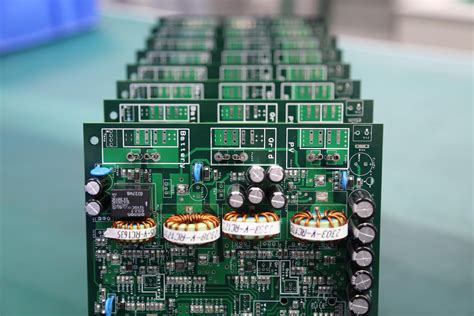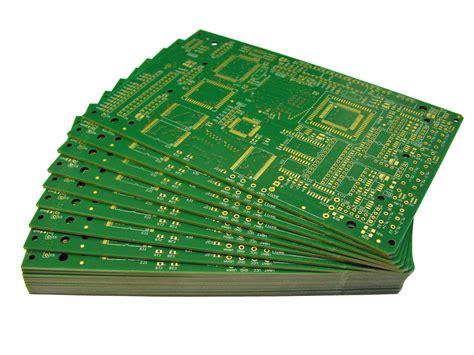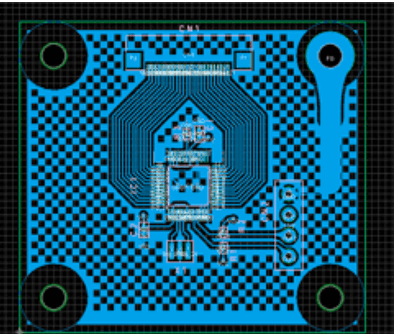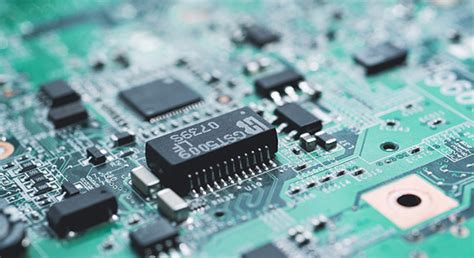Multi-layer metal core pcb
Advantages Of Multi-Layer Metal Core PCBs In High-Performance Electronics
Multi-layer metal core printed circuit boards (PCBs) have emerged as a pivotal innovation in the realm of high-performance electronics, offering a multitude of advantages that cater to the ever-evolving demands of modern technology. As electronic devices become increasingly complex and compact, the need for efficient heat dissipation, enhanced durability, and superior electrical performance has become paramount. Multi-layer metal core PCBs address these requirements with remarkable efficacy, making them an indispensable component in the design and manufacture of advanced electronic systems.
One of the primary advantages of multi-layer metal core PCBs is their exceptional thermal management capabilities.
In high-performance electronics, excessive heat generation is a common challenge that can lead to reduced efficiency, performance degradation, and even component failure. The metal core, typically composed of aluminum or copper, acts as a heat sink, efficiently dissipating heat away from critical components. This thermal conductivity ensures that the PCB maintains optimal operating temperatures, thereby enhancing the reliability and longevity of the electronic device. Moreover, the multi-layer design allows for the integration of additional thermal vias and conductive paths, further improving heat distribution across the board.
In addition to superior thermal management, multi-layer metal core PCBs offer enhanced mechanical stability and durability.
The metal core provides a robust foundation that resists warping and mechanical stress, which is particularly beneficial in applications subject to harsh environmental conditions or mechanical vibrations. This structural integrity ensures that the PCB maintains its performance over time, reducing the likelihood of failure and the need for frequent maintenance or replacement. Consequently, these PCBs are ideal for use in automotive, aerospace, and industrial applications where reliability is of utmost importance.
Furthermore, the multi-layer configuration of these PCBs allows for greater design flexibility and increased circuit density.
By stacking multiple layers of conductive material, designers can create complex circuits with a higher number of interconnections within a smaller footprint. This capability is crucial in the development of compact electronic devices that require sophisticated functionality without compromising on size or weight. The ability to incorporate multiple layers also facilitates the integration of various components and technologies, such as high-speed data transmission lines and power distribution networks, within a single board.
Another significant advantage of multi-layer metal core PCBs is their improved electrical performance.
The use of a metal core reduces electromagnetic interference (EMI) and enhances signal integrity, which is essential for high-frequency applications. The metal core acts as a shield, minimizing the impact of external electromagnetic fields and ensuring that signals are transmitted with minimal distortion. This characteristic is particularly valuable in telecommunications, computing, and other sectors where precise signal transmission is critical.
In conclusion, the advantages of multi-layer metal core PCBs in high-performance electronics are manifold, encompassing superior thermal management, enhanced mechanical stability, increased design flexibility, and improved electrical performance. As the demand for more efficient, reliable, and compact electronic devices continues to grow, the role of these advanced PCBs will undoubtedly become even more significant. By addressing the challenges associated with heat dissipation, mechanical stress, and signal integrity, multi-layer metal core PCBs provide a robust solution that meets the rigorous demands of modern electronic applications, paving the way for continued innovation and technological advancement.

Thermal Management Solutions Using Multi-Layer Metal Core PCBs
In the realm of modern electronics, efficient thermal management is a critical concern, particularly as devices become more compact and powerful. One innovative solution that has emerged to address this challenge is the use of multi-layer metal core printed circuit boards (PCBs). These advanced PCBs are designed to enhance heat dissipation, thereby improving the reliability and performance of electronic components. As we delve into the intricacies of multi-layer metal core PCBs, it becomes evident that their unique structure and material composition offer significant advantages over traditional PCB designs.
At the heart of multi-layer metal core PCBs is their distinctive construction, which incorporates a metal core,
typically made of aluminum or copper, sandwiched between multiple layers of dielectric material and copper circuitry. This metal core serves as a thermal conduit, efficiently transferring heat away from critical components and distributing it across the board. Consequently, this design minimizes the risk of overheating, which is a common issue in densely packed electronic assemblies. Moreover, the use of a metal core enhances the mechanical stability of the PCB, making it more resistant to thermal and mechanical stresses.
Transitioning to the benefits of multi-layer metal core PCBs, it is important to highlight their superior thermal conductivity.
The metal core acts as a heat sink, allowing for rapid dissipation of heat generated by high-power components such as LEDs, power transistors, and integrated circuits. This capability is particularly advantageous in applications where maintaining a low operating temperature is crucial for performance and longevity. For instance, in LED lighting systems, where excessive heat can lead to reduced light output and shorter lifespan, multi-layer metal core PCBs provide an effective solution by maintaining optimal thermal conditions.
Furthermore, the integration of multiple layers in these PCBs allows for greater design flexibility and increased circuit density.
This is particularly beneficial in complex electronic systems where space is at a premium. By accommodating more circuitry within a compact footprint, multi-layer metal core PCBs enable the development of smaller, more efficient devices without compromising on functionality. Additionally, the enhanced thermal management properties of these PCBs contribute to improved energy efficiency, as components can operate at lower temperatures, reducing the need for additional cooling mechanisms.
In addition to their thermal management capabilities, multi-layer metal core PCBs offer improved electromagnetic interference (EMI) shielding.
The metal core acts as a barrier, reducing the emission and susceptibility of electromagnetic interference, which is a critical consideration in high-frequency applications. This feature ensures that electronic devices can operate reliably in environments with significant electromagnetic noise, thereby enhancing their overall performance and reliability.
As we consider the future of electronic design, it is clear that multi-layer metal core PCBs will play an increasingly vital role in addressing the thermal management challenges posed by next-generation technologies. Their ability to efficiently dissipate heat, coupled with their mechanical robustness and design versatility, makes them an ideal choice for a wide range of applications, from consumer electronics to industrial systems. In conclusion, as the demand for more powerful and compact electronic devices continues to grow, the adoption of multi-layer metal core PCBs will undoubtedly become more widespread, offering a reliable and effective solution for thermal management in the ever-evolving landscape of electronics.

Design Considerations For Multi-Layer Metal Core PCBs In LED Applications
In the realm of LED applications, the design of multi-layer metal core printed circuit boards (PCBs) plays a pivotal role in ensuring optimal performance and reliability. As LEDs continue to gain prominence due to their energy efficiency and longevity, the demand for advanced PCB solutions has surged. Multi-layer metal core PCBs, with their unique thermal management capabilities, have emerged as a preferred choice for LED applications. However, designing these PCBs requires careful consideration of several factors to harness their full potential.
To begin with, thermal management is a critical aspect that cannot be overlooked.
LEDs generate significant heat during operation, and if not properly managed, this heat can lead to reduced efficiency and lifespan. Multi-layer metal core PCBs are specifically designed to address this issue by incorporating a metal core, typically aluminum or copper, which acts as a heat sink. This core efficiently dissipates heat away from the LED components, maintaining optimal operating temperatures. Therefore, selecting the appropriate metal core material is crucial, as it directly impacts the thermal conductivity and overall performance of the PCB.
In addition to thermal management, electrical performance is another key consideration.
The multi-layer design allows for more complex circuitry, which can support advanced LED functionalities. However, this complexity necessitates meticulous attention to the layout and routing of the PCB. Designers must ensure that the electrical pathways are optimized to minimize resistance and signal loss, which can affect the performance of the LEDs. Furthermore, the choice of dielectric materials between the layers is vital, as it influences the electrical insulation and overall stability of the PCB.
Moreover, mechanical stability is an essential factor in the design of multi-layer metal core PCBs.
The integration of multiple layers and a metal core can introduce mechanical stress, which may lead to warping or delamination over time. To mitigate these risks, designers must carefully consider the thickness and composition of each layer, as well as the bonding techniques used. Employing advanced manufacturing processes and materials can enhance the mechanical integrity of the PCB, ensuring it withstands the rigors of LED applications.
Transitioning to the aspect of manufacturability, it is important to recognize that the complexity of multi-layer metal core PCBs can pose challenges during production.
The integration of a metal core requires specialized fabrication techniques, which can impact the cost and lead time of the PCB. Therefore, collaboration with experienced manufacturers who possess the necessary expertise and equipment is essential. By working closely with manufacturers, designers can optimize the design for manufacturability, balancing performance requirements with cost-effectiveness.
Finally, environmental considerations are becoming increasingly important in PCB design.
As sustainability gains traction across industries, the choice of materials and manufacturing processes for multi-layer metal core PCBs must align with environmental standards. Selecting recyclable materials and minimizing waste during production can contribute to a more sustainable approach, which is particularly relevant in the context of LED applications that are often marketed as eco-friendly solutions.
In conclusion, the design of multi-layer metal core PCBs for LED applications involves a multifaceted approach that encompasses thermal management, electrical performance, mechanical stability, manufacturability, and environmental considerations. By carefully addressing these factors, designers can create PCBs that not only enhance the performance and longevity of LEDs but also align with broader industry trends towards sustainability and efficiency. As LED technology continues to evolve, the role of advanced PCB design will remain integral to unlocking its full potential.

Innovations In Multi-Layer Metal Core PCB Manufacturing Techniques
The field of printed circuit board (PCB) manufacturing has witnessed significant advancements over the years, with multi-layer metal core PCBs emerging as a pivotal innovation. These PCBs are designed to meet the increasing demands for thermal management and electrical performance in modern electronic devices. As electronic components become more compact and powerful, the need for efficient heat dissipation and reliable performance becomes paramount. Multi-layer metal core PCBs address these challenges by incorporating a metal core, typically aluminum or copper, which enhances thermal conductivity and mechanical stability.
One of the key innovations in the manufacturing of multi-layer metal core PCBs is the development of advanced lamination techniques.
Traditional PCBs rely on dielectric materials to separate conductive layers, but in metal core PCBs, the metal core itself acts as a heat sink. This necessitates a unique lamination process that ensures strong adhesion between the metal core and the dielectric layers. Recent advancements have led to the use of high-performance adhesives and bonding materials that can withstand extreme temperatures and mechanical stress, thereby improving the overall durability and reliability of the PCB.
Moreover, the precision in drilling and etching processes has seen remarkable improvements.
Multi-layer metal core PCBs require precise drilling to create vias that connect different layers. Innovations in laser drilling technology have enabled manufacturers to achieve higher precision and smaller hole diameters, which are essential for maintaining the integrity of the PCB’s electrical pathways. Additionally, advancements in etching techniques have allowed for finer line widths and spacing, facilitating the design of more complex and compact circuits.
Another significant development is the integration of advanced thermal management solutions within the PCB design.
As electronic devices generate more heat, effective thermal management becomes crucial to prevent overheating and ensure optimal performance. Multi-layer metal core PCBs are now being designed with embedded heat pipes and thermal vias, which enhance heat dissipation by providing additional pathways for heat to escape. This not only improves the thermal performance of the PCB but also extends the lifespan of the electronic components.
Furthermore, the adoption of computer-aided design (CAD) software has revolutionized the design and prototyping of multi-layer metal core PCBs.
CAD tools enable engineers to simulate and optimize the thermal and electrical performance of the PCB before it is manufactured. This reduces the likelihood of design errors and allows for rapid prototyping, which accelerates the development process. The ability to visualize and test different design configurations in a virtual environment has become an invaluable asset in the PCB manufacturing industry.
In addition to these technological advancements, there is a growing emphasis on sustainability in PCB manufacturing. The use of environmentally friendly materials and processes is becoming increasingly important as manufacturers strive to reduce their carbon footprint. Innovations such as lead-free soldering and the recycling of metal cores are being implemented to minimize environmental impact while maintaining high-quality standards.
In conclusion, the innovations in multi-layer metal core PCB manufacturing techniques are driving the evolution of electronic devices by addressing critical challenges related to thermal management and electrical performance. Through advancements in lamination, drilling, etching, thermal management, and design software, manufacturers are able to produce PCBs that meet the rigorous demands of modern technology. As the industry continues to evolve, these innovations will play a crucial role in shaping the future of electronics, ensuring that devices are not only more powerful but also more reliable and sustainable.






